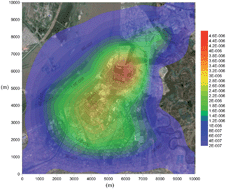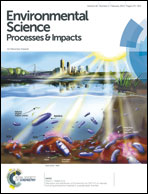Underestimated public health risks caused by overestimated VOC removal in wastewater treatment processes
Abstract
The uncontrolled release of volatile organic compounds (VOCs) from wastewater treatment plants (WWTPs) and the adverse health effects on the public have been of increasing concern. In this study, a lab-scale bioreactor was prepared to analyze the mass distribution of three aromatic (benzene, toluene, and xylenes) and four chlorinated VOCs (chloroform, carbon tetrachloride, trichloroethylene, and tetrachloroethylene) among the air, water and sludge phases in wastewater treatment processes. The VOC distribution through a full-scale WWTP in northern China was further investigated with respect to the effects of seasonal temperature variations and treatment technologies, followed by the cancer risk assessment using a steady-state Gaussian plume model (Industrial Source Complex) to simulate the atmospheric behaviors of the VOCs emitted from the WWTP. It was found that three aromatic hydrocarbons, notably benzene, were more readily released from the wastewater into the atmosphere, whereas the chlorinated compounds except chloroform were mainly present in the water phase through the treatment processes. The primary clarifier was the technology releasing high levels of VOCs into the atmosphere from the wastewater. The extents of volatilization or biodegradation, two important mechanisms to remove VOCs from wastewater, appeared to be determined by the physicochemical characteristics of the compounds, as the influence of treatment technologies (e.g., aeration) and seasonal temperature variations was rather limited. More importantly, the people living in the areas even more than 4 km away from the WWTP were still potentially exposed to cancer risks exceeding the regulatory threshold limit. The findings described the complex nature of VOC emissions from WWTPs and quantitatively indicated that the associated health impacts on the public near the WWTPs could be severely underestimated, whereas their treatment efficiencies by wastewater treatment technologies were overestimated. Instead of fully controlling the VOC release from WWTPs, the identification and abatement of important VOC species with regard to the atmospheric emission and health concerns is one possible alternative approach to effectively minimize the environmental and public health impacts by VOCs released from this particular source.


 Please wait while we load your content...
Please wait while we load your content...